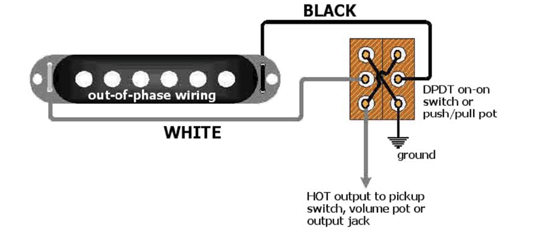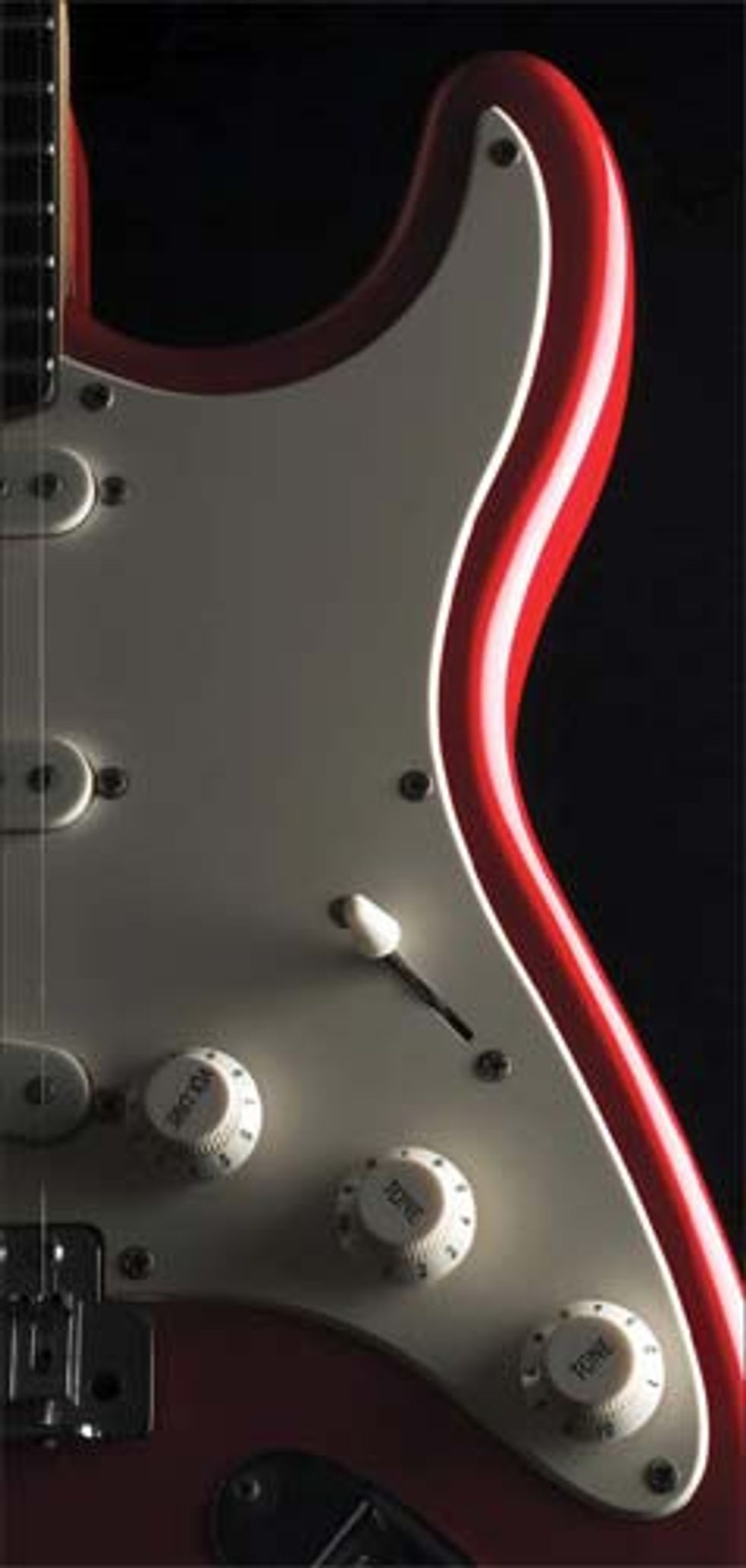Welcome back to the world of hot-rodded Stratocasters. I hope you had some fun with the seven-sound mod from last month. A friend of mine reminded me to share an example of that sound with you, for those that didn't whip out the soldering iron. If you have access to the album, Presumed Having a Good Time, from the Notting Hillbillies, featuring legendary Strat guru, Mark Knopfler, listen to their version of “Blues Stay Away From Me"—that's a Pensa- Suhr Strat, played with the bridge and neck pickup combined for the rhythm part.
This month, we will continue down the hot-rod path and talk about another very popular modification: the famous out-of-phase sound. The best part about this mod is that it isn't limited to the Strat—you can try it out on any pickup you'd like.
But before we dive in too far, let's clear up a few common misconceptions. When we talk about out-of-phase sounds on a Strat, we are not talking about position two and four on the 5-way pickup selector switch. While they are often (and incorrectly) referred to as “out-of-phase positions," in positions two and four both pickups are still in-phase.
Another myth you might read when researching out-of-phase sounds is that they are what's commonly known as the “Jimi Hendrix" sound. The idea is that Jimi's flipping of a right-handed guitar to accommodate his left-handed playing contributed to his signature tone. Physically rotating a pickup 180 degrees will definitely not put a pickup out of phase, but it will give you a different tone, especially when using a pickup with staggered polepieces.
 | |
|
Another major misunderstanding about the out-of-phase sound involves its basic structure. With the out-of-phase sound, you don't have to use two phase switches; reversing the leads of both pickups would simply put them back to in-phase again, which will give you a stock sound. Also, putting a single pickup out-of-phase will have no effect; for example, playing a Strat's bridge pickup out-of-phase will sound exactly the same as it does in-phase. The only time you can get an out-of-phase sound when you use two pickups together is to have just one of them out-of-phase.
When two pickups are in-phase, they work together and reinforce each other. When they are out-of-phase, the two pickups work against one another; the resulting sound is simply the “leftovers" from the pickups' cancellations. The closer the two pickups are, the greater the cancellations, meaning thinner sound and lesser volume. Thus, having the neck and bridge pickups wired out-of-phase is the best choice for this type of sound.

If you're not keen on messing with your guitar's pickups, an excellent and easy way to get this sound is through Brian May's Red Special guitar, available in reissue versions from a variety of builders (just Google “Red Special") which include out-of-phase switches for each pickup. It's a sound heard in a great number of Queen's recordings, and has become part of his trademark sound.
Another famous musician who discovered the out-of-phase sound did so by accident while playing on his late-fifties Telecaster with Ricky Nelson. James Burton found that he could move the 3-way pickup selector switch between the bridge and neck position to get this thin, out-of-phase sound with his Tele—he called it the “little Chinese tone." You can hear this sound on a number of famous Ricky Nelson recordings, like “Travelin' Man."
So let's heat up the soldering iron and do it! In order to achieve this sound (and to go back to a regular sound), we use a phase reversal switch [see figure 1].
Wiring a phase switch is fairly simple: unsolder the two pickup leads; solder the phase switch “out" leads (HOT and ground) to the exact same spot where the pickup leads were; and solder the pickup leads to the “From Pickup" terminals on the phase switch as shown below. Mount the switch, close up the guitar and start enjoying the new sound you've just created! You can also use a push/pull pot for this [see figure 1].
One word about wiring diagrams: we will need a lot of them in our future columns and Mr. Duncan himself was kind enough to give me permission to use his diagrams from seymourduncan.com
The reason I wanted to use his diagrams is not because I'm too lazy to draw my own— it's because of two reasons: first, it's arguable that Seymour Duncan set the worldwide standard for replacement pickups, so it's only fair (as a kind of tribute to him and his work) to use the only original source and give the credit where it belongs. Second, his drawings are very well done and easy to understand, even for modding novices, so why try to reinvent the wheel? So, thanks again to Seymour Duncan and Evan Skopp for their help.
I hope you enjoy this fun, new tonal option. It's fairly easy to install and should give you a nice range of sounds to experiment with. Next month, I will show you how to route your Strat pickups for a new and individual configuration of the tone and volume pots. We will start with the anatomy of the 5-way pickup selector switch. But until then... keep on modding!
Dirk Wacker has been addicted to all kinds of guitars since the age of five and is fascinated by anything that has something to do with old Fender guitars and amps. He hates short scales and Telecaster neck pickups, but loves twang. In his spare time he plays country, rockabilly, surf and Nashville styles in several bands, works as a studio musician in his spare time and writes for several guitar mags. He is also a hardcore DIY guy for guitars, amps and stompboxes and also runs an extensive webpage singlecoil.com about these things.










![Rig Rundown: Russian Circles’ Mike Sullivan [2025]](https://www.premierguitar.com/media-library/youtube.jpg?id=62303631&width=1245&height=700&quality=70&coordinates=0%2C0%2C0%2C0)







